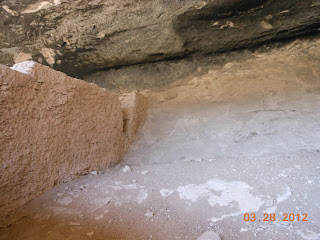The former National Guard armory building (built in 1916) in Deming, NM, is now a world-class museum operated by the Luna County Historical Society. It is manned by volunteers and funds for operation come from a very well stocked gift shop and donations. If you are close to Deming, NM, this museum is a must-see. The best museum we have ever had the pleasure to tour.
The Indian artifacts exhibits was extensive and included Mimbres pottery, jewelry and arrowheads. Could have taken lots of pictures to cover this collection.
If any of you are Lion's Club members, you will recognize this vest and know what all the buttons mean. Bill had one for many years and it was heavy with the buttons collected from other clubs.
A room was dedicated to the Hispanic population of Deming. Many local leaders and outstanding citizens were honored in this great display.
Many beautiful and interesting household and decorative home items were fun to see.
Well, well, well. All these items are in a museum and all these items have been used by Teri. The treadle sewing machine was her grandmother's. The switchboard was used at Rainier School in Buckley until the 1970's where Teri was the relief operator. The bookkeeping machine was also at Rainier School in the accounting office where Teri worked in the 1970's. Whoa, really - in a museum.
What an amazing bell collection. Teri enjoyed seeing the Norman Rockwell bells since she collects all kinds of Norman Rockwell memorabilia. It has only been recently that bells were added to her collection - a gift from her sister-in-law, Kathy.
The polio vaccine that was developed by Jonas Salk in 1952 has changed the world. It was licensed for use in 1957. The vaccine helped to interrupt the person-to-person transmission of the polio virus. It has reduced the incidence worldwide from about 350,000 in 1988 to 1,652 in 2007. No device is more associated to polio than the tank respirator, better known as the lung iron. Physicians who treated people in the acute, early stage of polio saw that many patients were unable to breathe when the virus's action paralyzed muscles groups in the chest. Death was frequent at this stage, but those who survived usually recovered much or almost all of their former strength. In 1959, there were 1,200 people using tank respirators in the United States; in 2004, there were 39.
There was a fascinating medical devices room that included the iron lungs. And, every museum needs a nutcracker collection. We will go back to see more of this museum. There are so many displays - rocks and geodes, cowboy exhibits, a military room, a quilt room, a radio collection, a transportation wing, liquor bottles, an art gallery and there is no way to see all of it during one afternoon.


























































